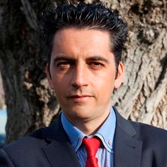Drone Inspection in Cultural Heritage
A special issue of Drones (ISSN 2504-446X).
Deadline for manuscript submissions: closed (30 September 2022) | Viewed by 14579
Special Issue Editors
Interests: digital survey; architectural drawing; 3D laser scanner survey; database; cultural heritage
Interests: archaeology; conservation-restoration; photogrammetry; cultural heritage; laser scanning; CAD; architectural drawings; remote sensing; civil engineering
Interests: photogrammetry; laser scanning; 3D modeling; topography; cartography
Special Issues, Collections and Topics in MDPI journals
Interests: drones, flight planning and control, geometric and radiometric sensors
Interests: cartographic; geodetic and photogrammetric engineering
Special Issues, Collections and Topics in MDPI journals
Interests: photogrammetry; laser scanning; 3D modeling; structural analysis; construction diagnosis
Special Issues, Collections and Topics in MDPI journals
Special Issue Information
Dear Colleagues,
Unmanned aerial and ground vehicles (UAV and UGV), also called drones, have been widely used in cultural heritage for at least three decades, opening a vast field of applications in large scale and close range digitalization. Both platforms can capture images, or even point clouds, from inaccessible areas such as roofs or narrow galleries, making the complete documentation of complex heritage sites possible. However, the rapid evolution of geomatics and robotics, e.g., the development of new algorithms for structure from motion or SLAM problems, as well as the latest developments in electronics (e.g., navigation systems), requiring a continuous review of the possibilities within the heritage field. The present Special Issue will cover the latest advances in cultural heritage documentation, including the diagnosis of these structures, by means of the use of drones. Rather than another 3D reconstruction contribution, this Special Issue seeks high-quality papers that explore all the potentialities offered by these platforms and the latest advances in data acquisition, positioning, and sensor hybridization applied to the inspection of cultural heritage sites and objects.
This Special Issue originates from "Drones - Systems of Information on culTural hEritage (D-SITE 2022 Conference, https://www.dsiteconference.com/), which will be held on 16–18 June 2022 in Pavia, Italy. The most exciting and innovative papers related to drones presented at D-SITE 2022 will be selected to be extended and included in this Special Issue. Additionally, we wish to invite you to contribute by submitting articles concerning your recent research, experimental work, reviews, and/or case studies related to drone inspection in cultural heritage. Contributions may be from, but not limited to, the following topics:
- Drone flight planning and control in cultural heritage
- Autonomous navigation of drones in cultural heritage
- 3D documentation of critical heritage infrastructures in cultural heritage for which drones are necessary
- Damage detection in cultural heritage by means of drones
- Inspection and diagnosis of heritage constructions by means of drones
- Structural condition assessment in cultural heritage by means of drones
- Multidisciplinary study cases that include the use of drones
It is hoped that this Special Issue provides advice and guidelines required for any cultural heritage professional making the best possible use of drones in cultural heritage.
Dr. Parrinello Sandro
Prof. Dr. Salvatore Barba
Prof. Dr. Diego González-Aguilera
Dr. Jesus Fernandez-Hernandez
Dr. Miguel Angel Maté-González
Dr. Luis Javier Sanchez-Aparicio
Guest Editors
Manuscript Submission Information
Manuscripts should be submitted online at www.mdpi.com by registering and logging in to this website. Once you are registered, click here to go to the submission form. Manuscripts can be submitted until the deadline. All submissions that pass pre-check are peer-reviewed. Accepted papers will be published continuously in the journal (as soon as accepted) and will be listed together on the special issue website. Research articles, review articles as well as short communications are invited. For planned papers, a title and short abstract (about 100 words) can be sent to the Editorial Office for announcement on this website.
Submitted manuscripts should not have been published previously, nor be under consideration for publication elsewhere (except conference proceedings papers). All manuscripts are thoroughly refereed through a single-blind peer-review process. A guide for authors and other relevant information for submission of manuscripts is available on the Instructions for Authors page. Drones is an international peer-reviewed open access monthly journal published by MDPI.
Please visit the Instructions for Authors page before submitting a manuscript. The Article Processing Charge (APC) for publication in this open access journal is 2600 CHF (Swiss Francs). Submitted papers should be well formatted and use good English. Authors may use MDPI's English editing service prior to publication or during author revisions.
Keywords
- Drones in cultural heritage
- Heritage documentation
- Drones equipped with geomatic sensors
- 3D modeling
- 4D analysis
- Diagnosis of historical constructions
- Data fusion








